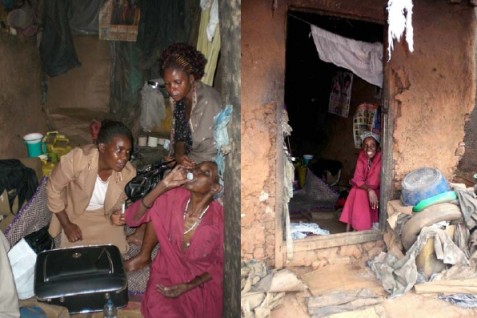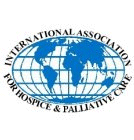Regional Reports by
IAHPC Board Members
China
Hospice and Palliative Care in China
Dr KS Chan, Hong Kong
Based on the distinction of historical and social background, this article is divided into hospice and palliative care in Hong Kong, Special Administration Region, and Macau, Special Administration Region, and hospice and palliative care in mainland China.
Hospice and Palliative care in Hong Kong and Macau
Hong Kong has a population of 6.9 million. Cancer has been the top killer in Hong Kong during the past 3 decades. The first hospice team in Hong Kong was set up in Our Lady of Maryknoll Hospital in 1982. The Society for the Promotion of Hospice Care, a non-government organization, was established in 1986 and under her auspices a palliative homecare service was first set up in 1988. It was also around 1987 that hospice units were opened in four other hospitals. The establishment of a Hospital Authority in 1992 was an important event, and since then, all public hospitals are under its governance. The hospice palliative care services have been developed in the public health care sector, with central coordination to enhance equity, accessibility and quality. By the 1990s, new hospice units with more comprehensive ranges of services proliferated to cover more patients in need. Currently there are 10 inpatient hospice palliative care units with a ratio of 39 palliative care beds per million population. Most units adopt a comprehensive care model that includes inpatient, outpatient clinics, home care, day care, and bereavement care. A community bereavement center, the Jessie & Thomas Tam Center, was established in 1997 and they liaison with the hospice palliative care units in place.
Advanced cancer patients constitute the vast majority of patients served, while a few units also take care of advanced AIDS and end stage renal failure patients. Currently more than 50% of patients who died from cancer in Hong Kong have received palliative care. Regular audits are being conducted in all units to ensure the quality of service. During this year, eight more hospice day care centers will be opened in major hospitals. Palliative Medicine was recognized as a subspecialty under Hong Kong College of Physicians and Hong Kong College of Radiologists in 1998 and 2002 respectively. Post-graduate certificate courses in palliative care nursing have been organized by the Hospital Authority since mid 90s. The 5th Hong Kong Palliative Care Symposium will be held on 11 October 2008.
Further information can be obtained from: http://www.hospicecare.org.hk/chi/download/form/PC%20Free%20paper.pdf
The newsletter of Hong Kong Society of Palliative Medicine is available on web: http://www.hkspm.com.hk/newsletter/index.htm.
Macau has a population of 0.53 million. The only hospice unit was opened in Kiang Wu hospital in 2000 with 30 beds.
Hospice and Palliative Care in Mainland China
The concept of hospice palliative care was introduced in mid 80s, and Anhui Cancer Rehabilitation Hospital and Tianjin Hospice were the early centers. The Committee of Rehabilitation and Palliative Care, China was first established in 1994. The WHO analgesic ladder has been promoted across the nation since the early 90s. The annual national consumption of morphine has increased from 4kg in 1984 to 253kg in 2002. In a survey among 92 countries, China has a population of 1.27 billion which constitutes 26.07% of the total population, but the total national annual consumption of morphine was only 0.8% with an average consumption of 0.195mg per population in 2002, compared with 24.21mg per population in the developed countries. The under-utilization of morphine may indicate inadequate pain control for cancer patients. Possible barriers may include poor availability of opioids, inadequate professional knowledge of how to use opioids, fear of using opioids and their cost.
In 1998, the Li Ka Shing Foundation (LKSF) funded the establishment of a hospice center in Shantou. It is primarily a home care program which provides free service to socially deprived advanced cancer patients. Adopting this similar model, the LKSF National Hospice Program developed a total of 20 centers in 2001 and 24 centers in 2007. Currently, these centers are serving 16,000 cancer patients annually. The average duration of service in 2007 was 96.7 days. As of the end of May of this year, the program has served a total of 68,716 patients. A textbook on hospice palliative care was recently published for medical and nursing undergraduate education programs in mainland China. Five medical schools will commence the elective course on palliative care this year. The programs promote volunteers to support the service. Presently, more than 8,000 volunteers have participated in the program and 78% of the volunteers are university students.
A strategic meeting on the development of palliative care was organized by the Committee of Rehabilitation and Palliative Care, China in Dec 2007. The implementation plan aims:
- To organize the 4th National Palliative Care Symposium in Shanghai in November 2008.
- To promote continuing education on palliative care, including topics on the use of opioids, and the management of bone metastases, neuropathic pain and malignant bowel obstruction.
- To formulate palliative care guidelines, that include principles of palliative care, the analgesic ladder, cancer fatigue, anorexia & vomiting, and nutritional support.
- To formulate a basic drug formulary in palliative care.
- To promote public education on palliative care.
Africa
Echoes from Africa
Dr. Anne Merriman, Uganda
Palliative care is alive, well and moving in the African sub continent. However, the needs are far greater than what is presently available or in progress.
HIV/AIDS has brought finances to cover palliative and support care to HIV patients. However, the proportion of funds allocated to palliative care is reduced because support care covers nearly all persons and includes food, mosquito nets and other supportive needs, whereas palliative care, which is care intensive, covers only those who are critically ill or at the end of life. There is a great need to understand that “palliative care” means pain and symptom control along with holistic care (including support care), for those who are suffering most. Money for palliative care should be provided separately to support care because the latter’s needs are a bottomless pit that will take all the funding.
Cancer has been neglected in the era of AIDS except for those lucky(?) enough to have AIDS as well! It is expected that the prevalence of cancer will continue to increase in sub-Saharan Africa and will become the main cause of death by 2015. By 2020, 70% of cancers will be found in the developing world .
By 2020, there will be more than 1 million deaths from cancer in Africa representing 10% of the world’s cancer deaths . There is a great deal of suffering in Africa where few countries have access to any radio or chemo therapy, and when, and where, it is available less than 5% will access or take advantage of these modalities because of late presentations. This is unlike HIV where there is tremendous physical suffering during intercurrent infections as well as the total suffering experienced by families and orphans left behind.
Palliative care is now present in varying degrees in 16 out of 48 African countries, but only 12 of these have affordable morphine available. Many countries declare that they have palliative care, but when visited it may be nonexistent or very small, serving a tiny population. The African Palliative Care Association (APCA) and Hospice Africa are trying to improve and move frontiers in order to provide care for more and more of our suffering friends.
Hospice Africa was founded in 1993, with a mission to support palliative care throughout sub-Saharan Africa by means of a “model”. Hospice Africa Uganda was chosen as the model a year later following a feasibility study of 4 countries. Hospice Africa Uganda is now a model and teaching centre for Uganda and other African countries. Uganda is seen as a success story for extending palliative care throughout the country. This was only possible because we worked closely with a cooperative and caring Ugandan Ministry of Health, using the public health approach.
In May, 2007, Hospice Africa started a new initiative. An experienced Ugandan palliative care Nurse, Catherine Nawangi, is now our Clinical Trainer for International Programmes. She spends a month with a palliative care service, where she shares experiences and discusses standards, explains the holistic approach to care, and provides training in clinical palliative care to the team. She later keeps in touch with the teams through text messages as many are not able to access email. This innovative approach, designed by Catherine, is working very well. The teams feel, and know, they are supported after she leaves. Since November 2007, she has assisted four teams in West and Central Africa (Cameroon, Nigeria and Malawi).
The idea of providing a model for Francophone and Luciphone Africa is now being explored. There is no model of palliative care service in either of these countries. This is a challenge to be taken up by Hospice Africa and APCA, and we are seeking the support also of IAHPC and others (including donors) who care.

Most cancer patients in Africa suffer terrible pain. The lucky ones in Uganda are reached by a Hospice team. This is urgently needed throughout SSA.
1. Jones SB, Cancer in the developing world: a call to action, BMJ 1999;319;505-508
2. Lingwood J et al, The Challenge of cancer control in Africa Nature Reviews (Cancer) Volume 8 (May 2008)
Email this page to a friend!
Top of Page |

